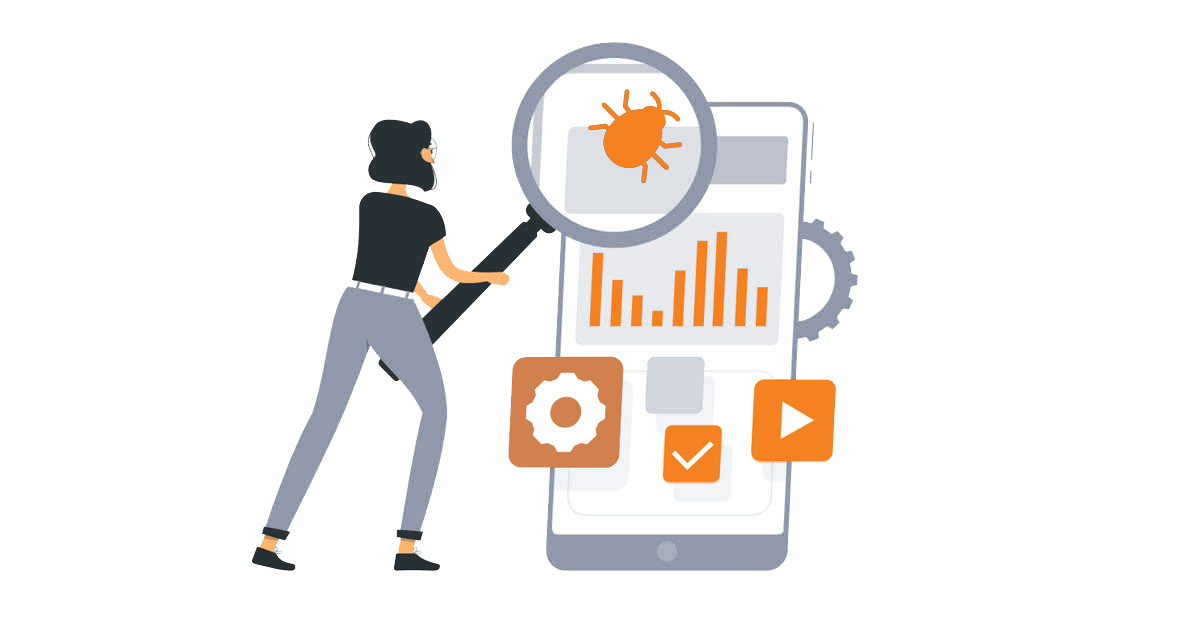Imagine your organization has been working on a particular product for an extended period. The first date of release is near, and everyone is excited. Also, the high stakes make people nervous about the quality of work.
And on the big day, although the application is excellent and full of features, you get embarrassing reviews, users aren’t satisfied, and assessments are harsh.
How did that happen?
Perhaps features and production deadlines roughshod the testing cases, and bug assessment.
There is no excuse for delivering a compromised product, and hence enterprises should ensure that they are providing a good quality product with robust testing procedures.
In this blog post, we are going to cover some software testing basics:
- What is Software Testing?
First things first.
Software testing is a process of evaluating the functionality of the software app with the intent to assess whether the developed software meets certain specific requirements or not. The main idea is to identify the defects to ensure that the developed product is error-free and ready for market launch.
In more technical terms, Testing in software development is a process of analyzing the software product or system to determine whether it satisfies certain conditions or defects.
- Why do we need Software Testing?
Did You Know? According to a report by Global Market Insights, the software testing market is forecasted to grow from $40 Billion in 2020 to $60 billion by 2027.
The numbers speak for themselves!
Only a few people can argue against the need for software testing during software development. Quite obviously, late deliveries and software defects can damage a brand’s reputation, leading to frustrated and lost customers.
For instance, consider when Nissan has to recall over 1 million cars due to software defects in airbag sensors.
An industry parallel, but showcases how Quality control is pertinent. The lack of which can have disastrous consequences for your reputation and your wallet.
Though software testing is very costly, companies can save millions if they have reasonable testing procedures and QA practices. Software testing at an earlier stage helps uncover problems that can impact a lot at the later stages.
Sooner Testing is done, sooner defects such as those mentioned below can be detected;
- Architectural flaws
- Poor design decisions
- Incorrect functionality
- Issues with scalability
Software testing helps build more reliable and high-quality applications that are delivered with fewer errors. Such a system exceeds consumer expectations and leads to potentially more sales.
- What are the different types of Software Testing?
Software testing is not a single thing but several variations that come together when categorizing your data under different criteria. For instance, when you order testing types into manual or automated Testing.
One of the major factor for categorizing the tests is through the amount of internal implementation that can be done.
Functional Testing
Through the process of functional testing, businesses can verify the functions through specific requirements. The software development is not a great issue, but the behaviour of an app is.
The different types of functional Testing include:
- Unit Testing: This includes testing individual components in comparison to certain requirements.
- Integration Testing: Testing components in a group.
- System Testing: Complete testing of software through a software.
- Regression Testing: One of the most critical testing phases is the old test cases of the entire application after implementing new functionality.
- Interface Testing: These tests check whether the communication between two software is carried out correctly or not.
Non-Functional Testing
In non-functionality Testing, reliability, usability, and performance are used as testing parameters. This can be used to check how many users can log in to the system simultaneously.
This type of Testing includes:
- Performance Testing: This Testing is done to check the performance or speed of the application.
- Load Testing: As the name suggests, the application’s behavior under a huge workload is tested under load testing.
- Stress Testing: Stress testing determines the software’s robustness by testing whether it would work beyond regular operation.
- Volume Testing: This test helps to check the system’s performance by loading the database to increase data volumes.
- Recovery Testing: In this testing procedure, the testers determine the application’s capacity to recover from hardware crashes.
- Usability Testing: This explores the end-users ease in learning, operating, and preparing inputs and outputs.
- Compliance testing determines the systems’ compliance with external and internal standards.
Moving forward, the next basis of comparison is how much you know a particular product;
Black Box testing
In Black box testing, you have the tiniest information on how to build a product. Since you don’t know about the product’s structure, code, or even logic, you would use the product as a user would.
White Box testing
In white-box testing, the testers are provided with in-depth information about the product. To look for inefficiencies in the code, this testing is one of the most trusted ones.
Compared to Black box testing, white-box do not focus on how a particular application works.
Grey-box Testing
In this type of Testing, you have partial information about the product and look for bugs compared to others.
An example of grew box testing is, you have designed an element that is blue but has a red shade. The user might not notice this, but your app knowledge would help you identify the bugs.
Now that you know what Testing is, it is time to move forward and understand how to go about it.
Also Read: Functional Testing vs. Automation Testing: Understanding the Difference
What is Functional Testing? A Detailed Guide
What is Automated Testing? A Quick Guide
How does the process of Software Testing work?
Like all other processes, software testing can be divided into different phases, known as the software testing lifecycle. Let’s have a look at all of these processes:
- Planning
Planning is the beginning of every process. In this phase, you collect all the details about the product and make a list of tasks that has to be tested first. Then you must prioritize your task checklist and divide the process within your team.
- Preparation
After the process of planning, you have to build the testing foundation, which includes preparing for test environment and then further researching.
- Execution
This is done when you run the tests on the product and collect the results. These results are then compared with the expected results, and it is seen whether the product is working as expected or not.
- Reporting
This is the last phase of the software testing process, where-in you have to report the entire documentation process and submit the same to the concerned personnel.
Manual vs. Automated Testing
In this era, everything that is manual is being replaced by automated effort. And how can Testing be left behind? There are two different ways of performing software testing –
- Manual, and
- Automated
As we know, manual labor requires a lot of time and effort. Manual Testing is the process in which the tester determines different software features and performs the function without using tools or test scripts.
Whereas, in automated Testing, the testers deploy scripts for Testing. These pre-scripted tests compare the actual vs. expected outcomes. With test automation, continuous human intervention is not necessary.
Bringing it all together
Organizations should never underestimate the power of a well-crafted, seamless product – void of bugs, and annoyances.
On this note, Testing operations must evolve.
For organizations, that means constantly tinkering with QA processes, introducing new and relevant practices, and hiring resources that can enable a thorough and comprehensive testing cycle for Software products.
Dedicated Testing and QA Services @Netsmartz
At Netsmartz, we’ve been pioneering Testing & QA services for the last 20+ years. We provide organizations of all scales and sizes with dedicated QA and QC resources to bolster their software quality.
Netsmartz assists brands to delight their customers with a clean and bug-free user experience – making way for market-ready applications.
Our dedicated testing resources help you lower QA costs while enabling a parallel unit that works alongside your development operations.
Book a free consultation and ship better software with Netsmartz.
Summary
Kickstart Your Project With Us!
Blog
Popular Posts
CONTACT US
Let's Build Your Agile Team.
Experience Netsmartz for 40 hours - No Cost, No Obligation.
Connect With Us Today!
Please fill out the form or send us an email to
 Don't Miss Out:
Don't Miss Out: 







